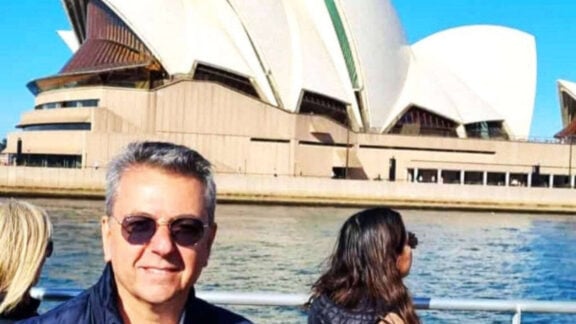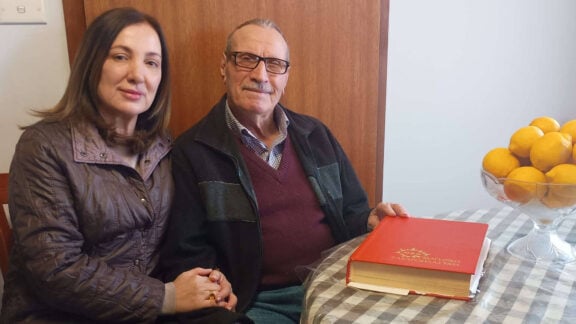In August a 10-man team led by Englishman Robert ‘Bob’ Hobman set out to recreate an ancient voyage from Kythira, an island off the southern Peloponnesian coast, to Crete.
The route is thought by some to be the first voyage taken by ancient Europeans on the sea, some 130,000 years ago.
Hobman told Neos Kosmos that he and his team (The First Mariners) of researchers often recreate historical voyages taken in the earliest days of human exploration and movement, but this was his first in Europe.
It was only a recent finding, six or seven years ago, that led Hobman to Greece.
“I was going to do it 11 years ago, but there was no evidence that people had been on Crete that long (130,000 years). It was only the dating of stone tools that they found six or seven years ago that gave us the go ahead. So I’ve been waiting and waiting for ages and I thought then, and I still do, that it could conceivably have been the first time Europeans went to sea in that sort of context,” he says.
Prior to the discovery of the ancient tools, Hobman explains that many experts believed human existence on Crete dated 12,000 years, and by undertaking the voyage it could displace early thought and shed light on human movement that dated well before then.
“I had to do the voyage to establish that it was possible. We got a huge amount of support from Greek academics because it was a resource for them, it was a teaching, it was a resource for their students to touch something that actually happened.”
“Our main problems were materials because the flora of Greece or Europe in general isn’t the same as it was 130,000 years ago, so we really have no idea what materials they would have used to make their rafts, primitive or otherwise, other than it floated. I’m presuming they used reeds, something light, something they could cut easily, something that was manageable, we do work with stone tools.”
The vessel took six weeks to construct, but Hobman and his team weren’t pressed for time because they had to wait for good weather on the seas to be able to partake in the voyage. Using kalama, a bamboo like material introduced to Greece and greater Europe from Asia, his team set about making the raft.
“There’s a trench between Kythira and Crete which has the reputation of being one of the worst pieces of sea in the Mediterranean – when it kicks up it’s nasty and we had bad weather for a couple of weeks before then. We just bided our time and waited. We were ready for days and days before, we just waited for the right wind and we set off cautiously paddling out of the harbour, not knowing what lay ahead, but it was amazing. We knew that we had the slight advantage of what the weather was going to be, so we cheated a bit in that regard … we’re very lucky in that regard.”
Since the two-day voyage to Chania, the raft has been retired in Kythira, where it will be a displayed artefact.
Hobman says his admiration and love for Kythira has led him into a life-changing decision, where he will relocate from his current home, Bali, to the island by mid-2015.
“It was one of the best trips that I’ve made, usually everything goes wrong, but it was a delightful place, a wonderful place to work in, at the bottom of Kythira, Kapsali … wow, it was great.”
The voyage will feature as part of a six-part documentary on the ABC.









